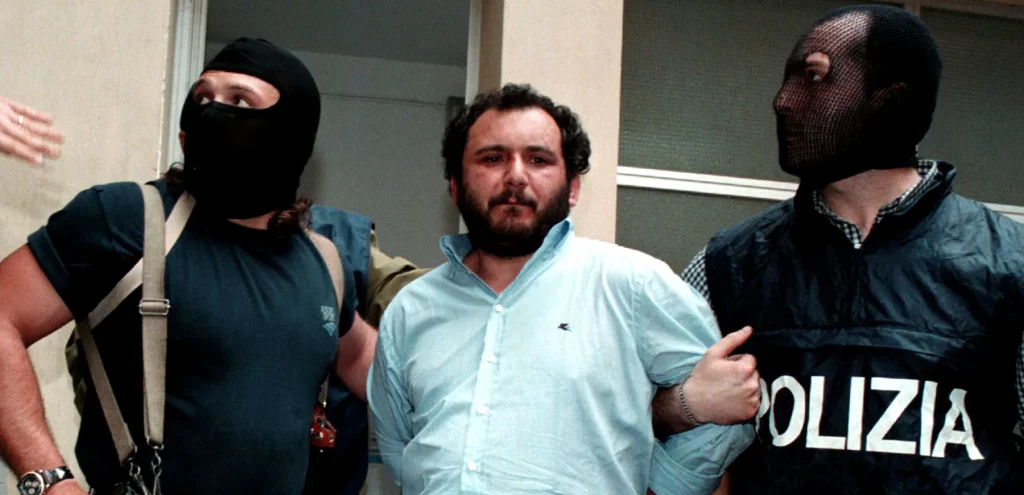Understand Your Rights. Solve Your Legal Problems


Notorious Sicilian mafia figure Giovanni Brusca has described himself as a 'monster' in a new book to be released today.
Brusca, who’s 67 and used to go by the nickname 'the pig', got arrested back in 1996. He ended up with a lighter sentence of 30 years but was let out five years early in 2021 for good behavior. Now, he’s living in a hidden spot and receiving €1000 every month.
Born in 1957, the Sicilian born mobster was a former member of the Corleonesi clan of the Sicilian Mafia. His grandfather and great-grandfather, both farmers, were made members of the Mafia. His father Bernardo Brusca (1929–2000), a local Mafia patriarch, served concurrent life sentences for several homicides.
With over 150 murders to his name, including anti-mafia prosecutor Giovanni Falcone, whom he murdered by blowing up half a ton of explosives under a road in Capaci, close to Palermo, as Falcone's car drove over it, he is also known for having a 12-year-old Giuseppe Di Matteo, the son of a mafia informant, strangled to death.
Child, Giuseppe Di Matteo, was taken and held captive for over two years, was tragically killed, with his remains disposed of in acid. Brusca spoke with anti-mafia volunteer and parish priest Don Marcello Cozzi while still in prison in Rome for a new book called Someone Like That, according to the Times. When discussing Di Matteo's murder, Brusca acknowledged that he understood there was 'no forgiveness' for such an act, while also admitting that people often say he doesn't show enough remorse. In the book, he shares memories of his childhood home being raided and how he once saw the notorious Cosa Nostra leader, Totò Riina, as 'God on earth.'
On May 20, 1996, Brusca, who was 39 at the time, got arrested in a small house in the Sicilian countryside close to Agrigento. He was having dinner with his girlfriend, their young son, his brother Vincenzo, his sister-in-law, and their two kids. The cops figured out where he was thanks to the sound of a plainclothes officer riding by on a motorbike, which was caught on a call they intercepted from Brusca's mobile phone. When Brusca was brought into the Palermo police station about 90 minutes later, a crowd of police officers erupted in cheers, honking their horns and hugging each other. As Brusca, looking scruffy with a beard, dirty jeans, and a wrinkled white shirt, got out of the car, some officers took off their ski masks, signaling they felt safe from the Mafia now. One officer even managed to slip past the guards and threw a punch at Brusca.
Brusca acknowledges that his early release is thanks to his victim Falcone, who played a role in getting shorter sentences for mafia members on the run. Author Mr. Cozzi mentioned that although he anticipated encountering 'the monster of Capaci' in Brusca, he was instead taken aback by the mobster's 'everyday normality', claiming that Brusca is 'haunted by his past'. In what he describes as a 'psychological portrait', Mr. Cozzi expressed his desire to 'confront the mafia directly', an organization he believes is not easily understood 'from the outside'. His work has received a mixed reaction from the media, with La Repubblica stating that the families of Brusca's victims have 'every right not to forgive'.
The Corleonesi Mafia clan was a group within the Corleone family of the Sicilian Mafia that emerged in the 1970s. Key figures in this faction included Luciano Leggio, Salvatore Riina, Bernardo Provenzano, and Leoluca Bagarella. Interestingly, the Corleonesi weren't just made up of members from Corleone itself. During the Second Mafia War in the early '80s, they clashed with the Palermitan faction, which included notable names like Gaetano Badalamenti, Stefano Bontate, and Salvatore Inzerillo. The Corleonesi's triumph, especially with Totò Riina's rise to power, ushered in a new chapter for the Sicilian Mafia. Between 1992 and 1993, they launched a series of attacks against the state, leading to what became known as the State-Mafia Pact.


